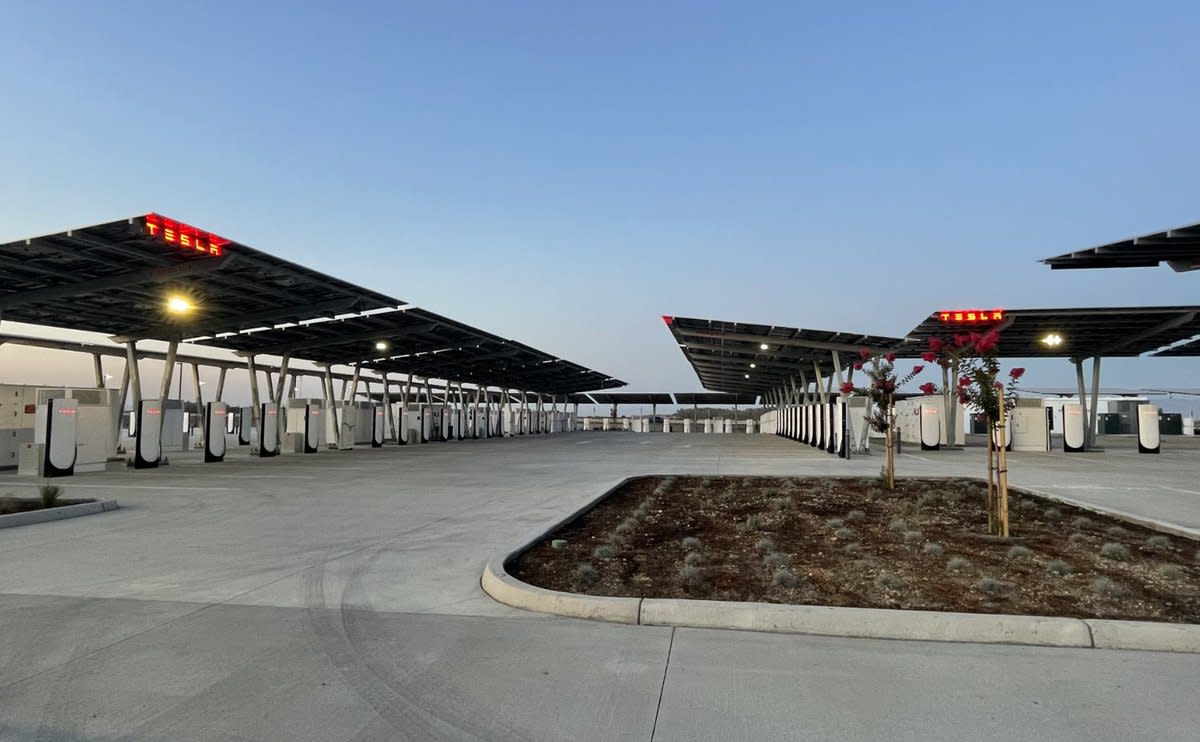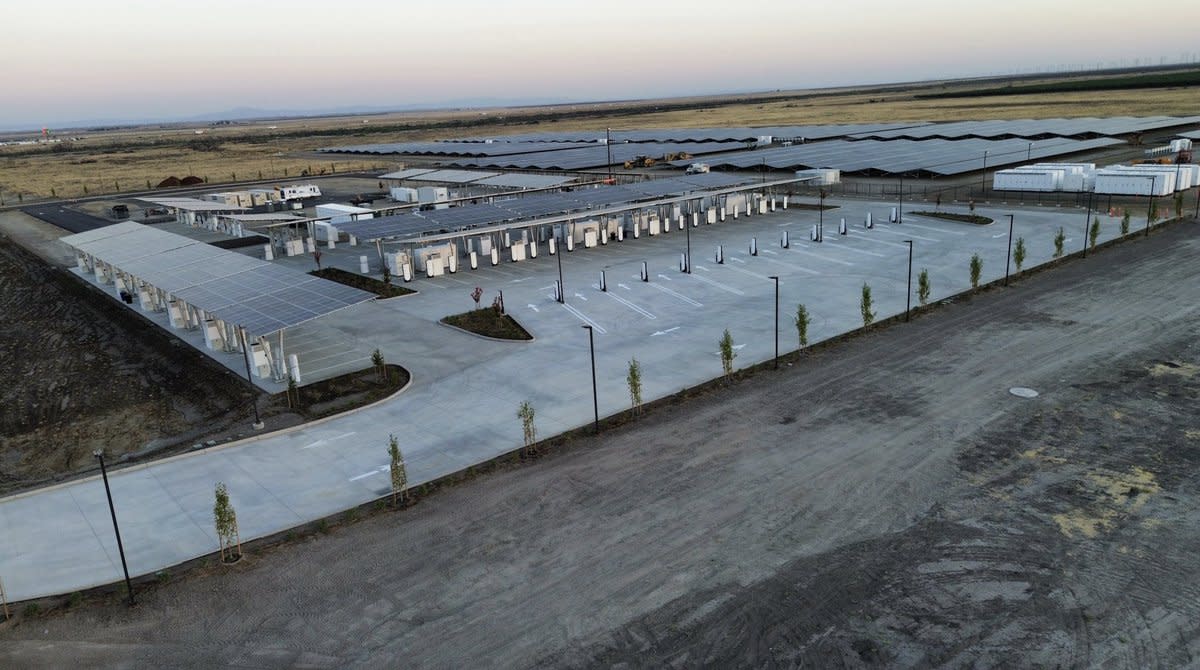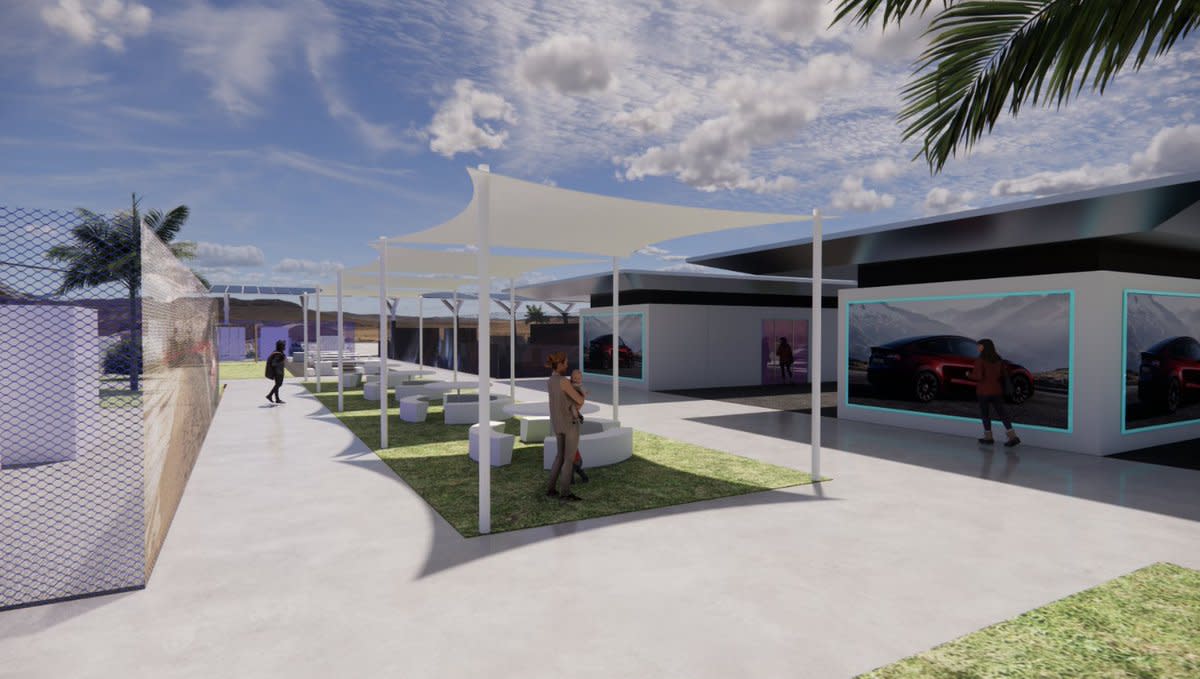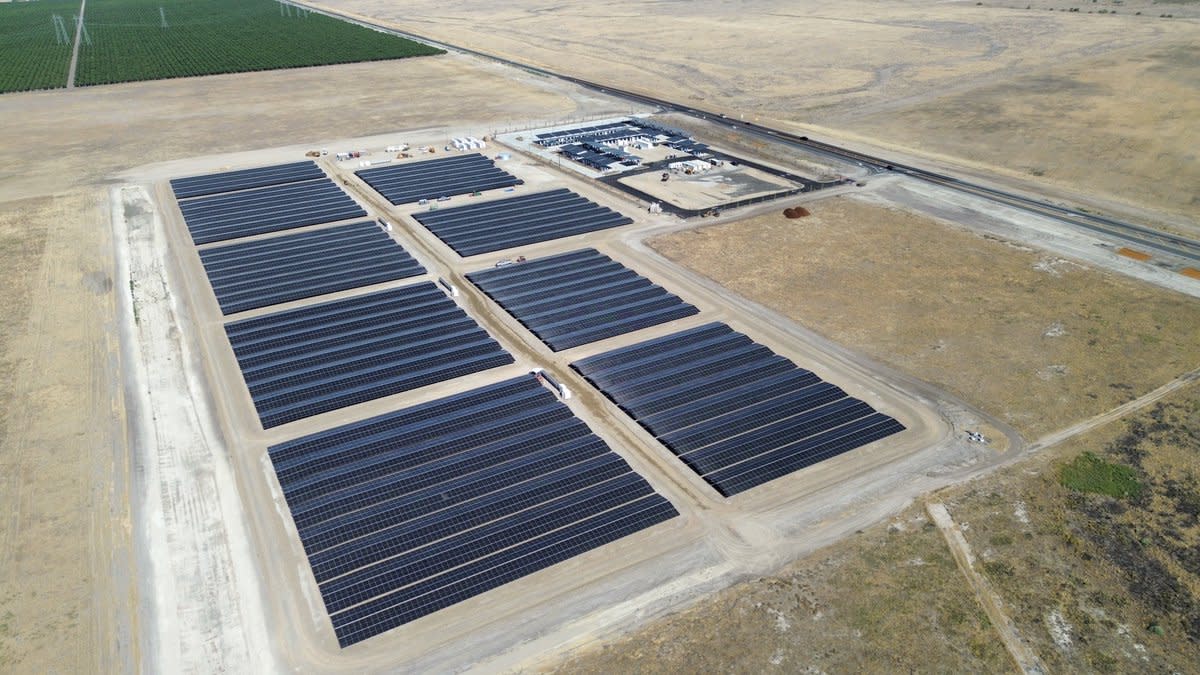Tesla has officially flipped the switch on the first half of its new “Oasis” Supercharger site in Lost Hills, California — and it’s not just another row of charging stalls. This is a fully off-grid, solar-powered megasite, quietly breaking ground on what might be the future of roadside EV infrastructure.

Solar Power, No Strings Attached
With 84 out of 168 planned V4 Superchargers now operational, the Oasis site delivers up to 325 kW per stall using nothing but sun and storage. Tesla installed 11 megawatts of solar generation and ten Megapacks — each capable of storing vast amounts of energy — allowing the station to run entirely independent of the grid. Only 1.5 MW of grid power is tied in, essentially as a backup. It’s a long-teased concept made real: a sustainable, scalable energy ecosystem with no utility company in sight.
The location isn’t accidental either. Set along the I-5 corridor between San Francisco and Los Angeles, the site caters to one of the busiest EV travel routes in the U.S. The first phase went live just ahead of Fourth of July weekend, giving Tesla drivers clean, fast charging during peak travel. Twelve of the active stalls are pull-through units, accommodating vehicles with trailers or boats — a nod to Tesla’s growing truck and SUV audience.
Related: Tesla’s Robotaxi Dreams Face a Harsh Reality Check

The Road to Becoming the Biggest
The rest of the site, including the remaining 84 stalls and a planned driver lounge, is scheduled to open later this year. Once complete, Oasis will likely become the largest Supercharger station in the world — a symbol of what Tesla can build when it isn’t tangled in red tape or waiting for local power utilities to catch up.
The move also arrives at a time of shifting fortunes for Tesla’s wider Supercharger network. In recent weeks, some stations have reportedly disappeared from maps along major U.S. routes, raising questions about infrastructure strategy and local disputes.

Rivals Are Catching Up
Tesla’s competitors aren’t sitting still either. Charging technology is evolving rapidly, and new rivals are starting to surpass Tesla in raw speed and energy delivery. One such case involves a recent breakthrough that’s pushing charging times even lower, making Tesla’s own hardware look slightly dated by comparison.
Still, while others chase specs, Tesla continues expanding its reach. More automakers are joining the Supercharger ecosystem — including legacy brands now aligning with Tesla’s North American Charging Standard (NACS), reinforcing the company’s role as gatekeeper in the EV transition.

A Blueprint for the Future
What makes Oasis so compelling isn’t just its scale or solar credentials. It’s the proof-of-concept it represents — an off-grid, high-capacity station built quickly and without relying on overburdened utilities. If it works in Lost Hills, it can work in dozens of other places across the country. Tesla’s Oasis may not just be the biggest charging site yet — it might also be the smartest.